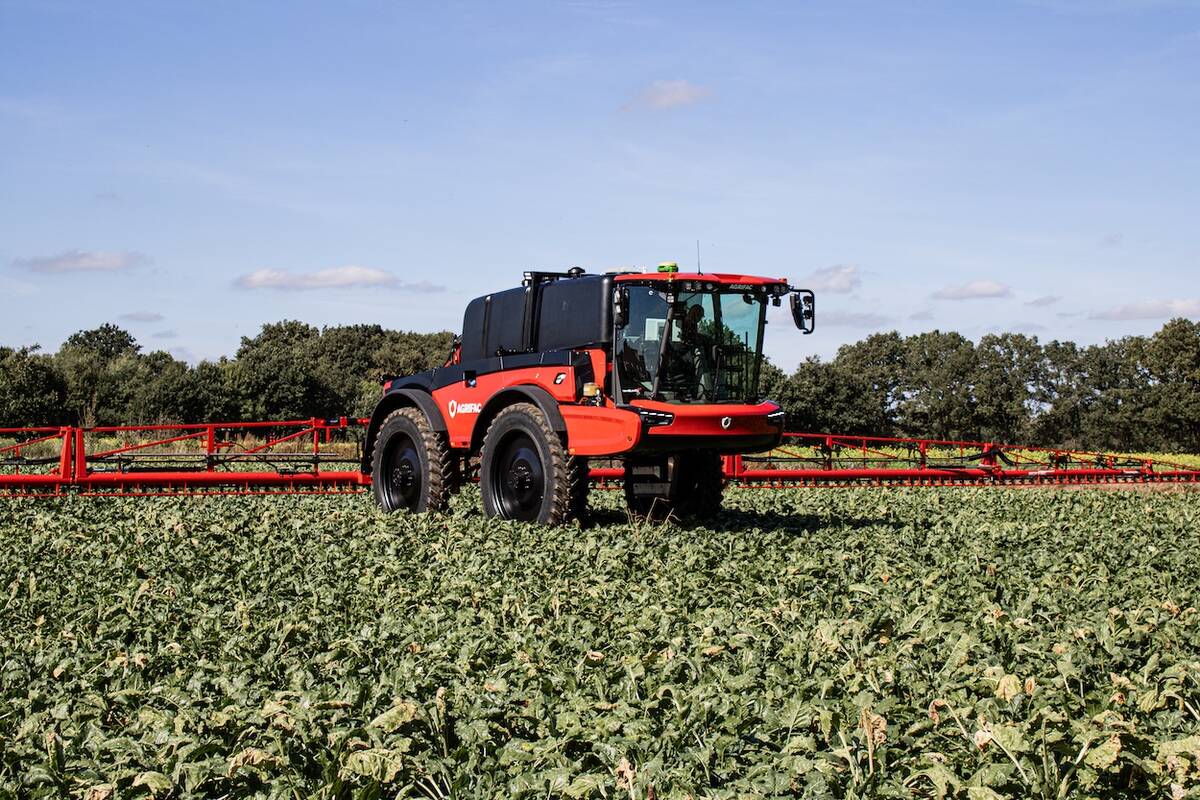Spring seeding | Making the most of photosynthesis
PORTAGE LA PRAIRIE, Man. — Every farming endeavour is based on harvesting sunlight.
“That’s what we do, regardless of the type of farming enterprise we’re involved in,” independent agronomist Bill Lehmkuhl told a recent Pioneer Corn Planter Clinic in Portage la Prairie.
“Whether we’re growing crops or livestock, the energy all comes from the sun. Our job as farmers is to manage the harvest of that sunshine.”
Lehmkuhl said crops can use as many hours of sunlight as Mother Nature allows from June 21 until harvest, but an hour of sunlight between crop emergence and June 21 is more valuable than one hour of sunlight later in the growing season.
Read Also

Agrifac launches ‘new generation’ of sprayers
Agrifac recently announced a “new generation” of self-propelled sprayers, consisting of three models: the Vanguard 55, Vanguard 67 and Endurance 80.
More sunlight early in the growing season means more photosynthesis and better crop development.
However, Lehmkuhl said farmers can’t depend solely on sunshine.
Perfect growing conditions from June 21 until harvest will be of limited benefit if a crop doesn’t have a well developed root system and foliage cover by June 21.
As well, a perfect summer from June 21 until harvest cannot make up for late emergence or a bad spring.
This means farmers should try to seed early to take full advantage of early season sunshine. They should also strive for a well-established crop that can survive the natural disasters that might occur before harvest.
Early seeding is a question of balance, weighing the hope of harvesting a big load of May-June sunshine against the risks of having seeds sitting in cold soil and ultimately getting a late start.
That’s always a gamble, said Gregory Sekulic, an agronomist with the Canola Council of Canada in Grand Prairie, Alta.
“Just because we can be on the field doesn’t mean we should be there,” he said.
“When we talk about early seeding, we should really be talking about early, timely seeding. And timely is the key word here. We can sometimes go very early with canola, but only if the soil is 5 to 6 C.”
Although soil temperature can vary from one year to another, Sekulic said crop insurance data from Alberta indicates the highest canola yields generally come from fields seeded in the second week of May.
The thermometer should always take precedence, no matter what the calendar says. A seed that sits for days in cold soil becomes an easy target for predators.
“When we put seed into soil colder than 5 C, emergence takes longer,” Sekulic said.
“That opens the window to attacks from insects and soil borne diseases.”
Kristen Phillips, a canola council agronomist in Brandon, said seed treatments are available to protect against those predators, but they don’t protect against the passage of time.
“The longer a seed sits in cold soil without germinating, the less effective are your seed treatments. Treatments are effective only for a limited time,” Phillips said.
“If your seed sits in the ground for 10 days without germination, you have lost 10 days of protection, which you’ve already paid for. You get more benefit from your seed treatment investment in warmer soil conditions. The quicker the emergence, the better return on your investment.”
She said it’s tempting to ignore temperature and seed too early.
“I know guys are going to go as soon as they can. Waiting for optimal conditions isn’t easy,” she said.
“The optimum soil temperature to give your crop the best chance is not 5 C. It’s 8 C. But we like to see soil temperature at least five degrees in order to avoid problems. Five is the minimum.
“With soil temperatures colder than five degrees, you run the risk of slower germination and slower emergence. Then you get uneven germination, and that creates a whole new set of problems that will stick with you all year long.”
She said seeds with better vigour and vitality will always germinate and emerge sooner. To further complicate the matter, there can be more than two flushes of emergence.
“That’s a situation you don’t want in any kind of crop,” said Phillips.
“A field with different stages of emergence means you have different stages of growth from May until harvest. That impacts application of all your crop protection products, your swathing dates and combine dates.”
Conventional wisdom says blackened fields generally warm up sooner than fields with stubble, such as minimum till and zero till fields because the black soil absorbs heat and holds it better.
“That’s an interesting assumption, because there’s research being conducted now looking at the different types of stubble, showing that the ground actually warms up quicker under some stubble conditions,” Phillips said.
“The diameter of the stalk is the factor. Solar heat goes down the stalk, into the soil and warms the soil at the bottom of the stalk.”
For more information, contact Phillips at 204-720-6923 and Sekulic at 780-832-2382.















